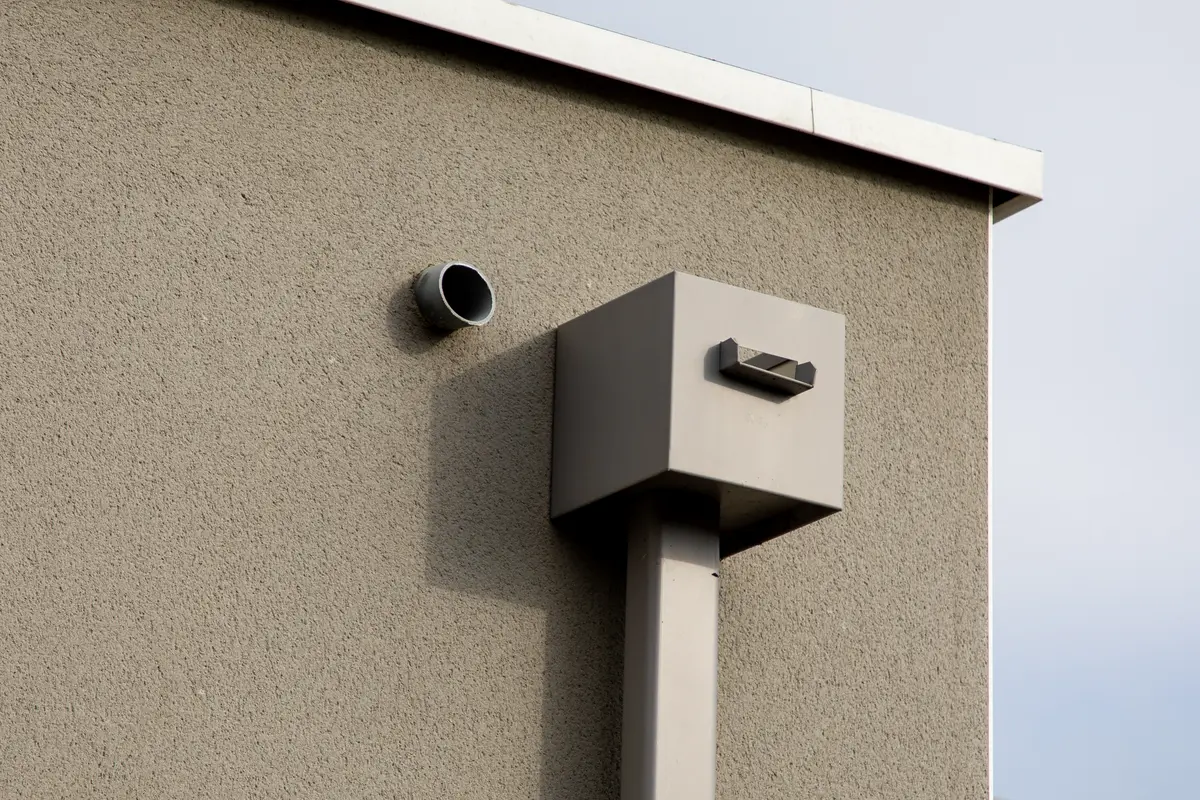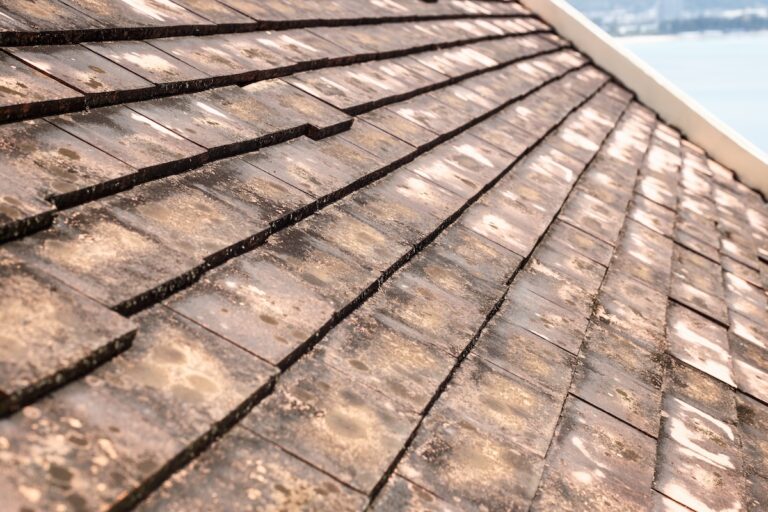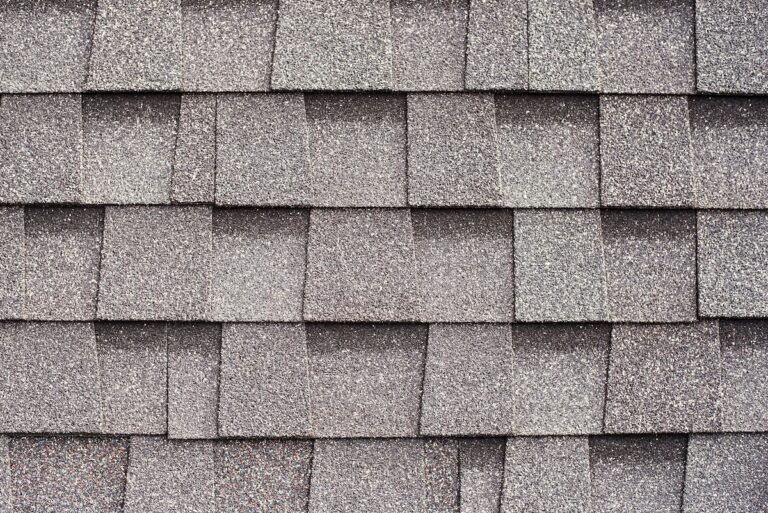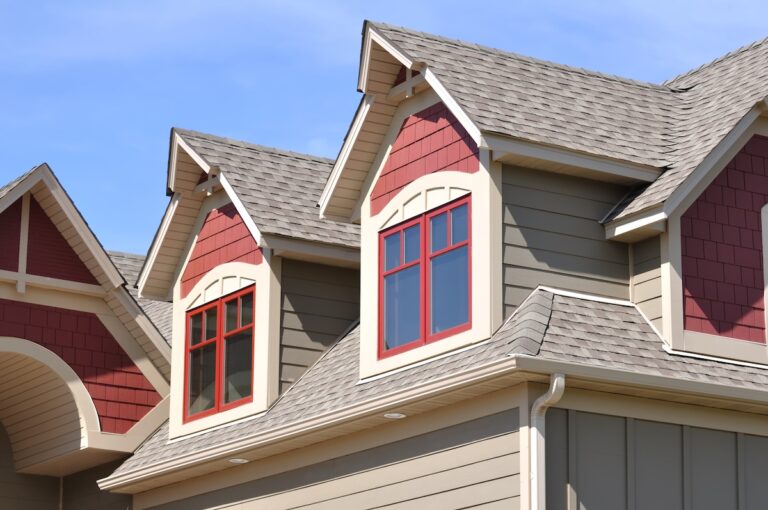Flat roofs have been a popular choice for commercial properties for decades, offering a sleek, modern aesthetic and practical use of space. However, maintaining a flat roof comes with its own set of challenges—one of the most important being proper water drainage.
This is where a flat roof drainage system, including gutters for flat roofs, comes into the picture. Whether you’re a property manager overseeing multiple buildings or a commercial property owner looking to protect your investment, understanding the role of gutters in flat roof systems is crucial.
In this post, we’ll take a deep dive into gutters for flat roof systems. You’ll learn:
- Why they’re essential
- The different types available
- How to maintain them
- Tips for choosing the best gutter system for your building
By the end, you’ll have the tools you need to make informed decisions that ensure your flat roof stays in top shape for years to come.
Why Gutters for Flat Roofs Are Essential
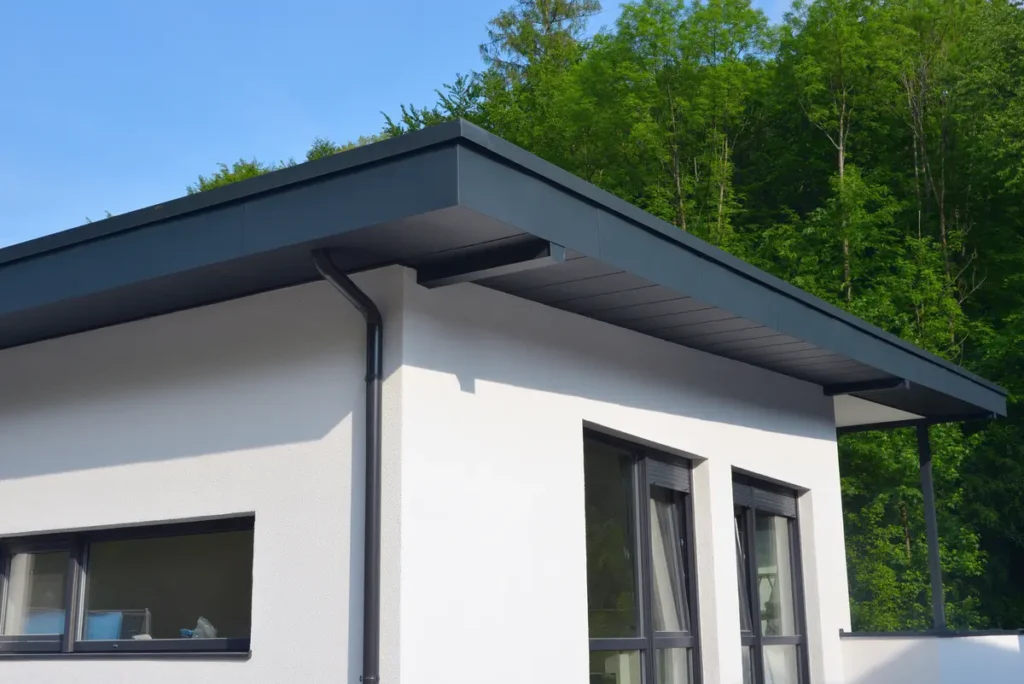
Unlike pitched roofs, flat roofs have minimal slope, meaning water doesn’t naturally flow off the roof. Without a proper drainage system, such as flat roof gutters, rainwater and melted snow can pool on the surface, leading to issues such as leaks, structural damage, and even roof collapse in extreme cases.
Here’s why gutters are a must for any flat roof:
- Efficient Water Management: Gutters direct water off your roof and away from your building. This prevents water buildup, which can weaken the roof structure and lead to costly repairs.
- Protects Your Walls and Foundation: Without gutters, water can spill over the edge of your roof, causing water streaks, erosion, and damage to the walls and foundation. Gutters channel water to specific drainage points, keeping your building safe.
- Extends Roof Lifespan: Standing water on a roof can cause materials to degrade over time. By keeping your roof dry, gutters help preserve its integrity and extend its lifespan.
- Prevents Mold and Mildew: Pooling water often leads to mold and mildew, which can harm not only your building but also the health of its occupants. Gutters help prevent these issues by ensuring water is properly discharged.
- Compliance with Local Codes: Many municipalities require commercial properties to have adequate drainage systems for flat roofs. Investing in gutters ensures you meet these regulations.
4 Types of Gutters for Flat Roofs
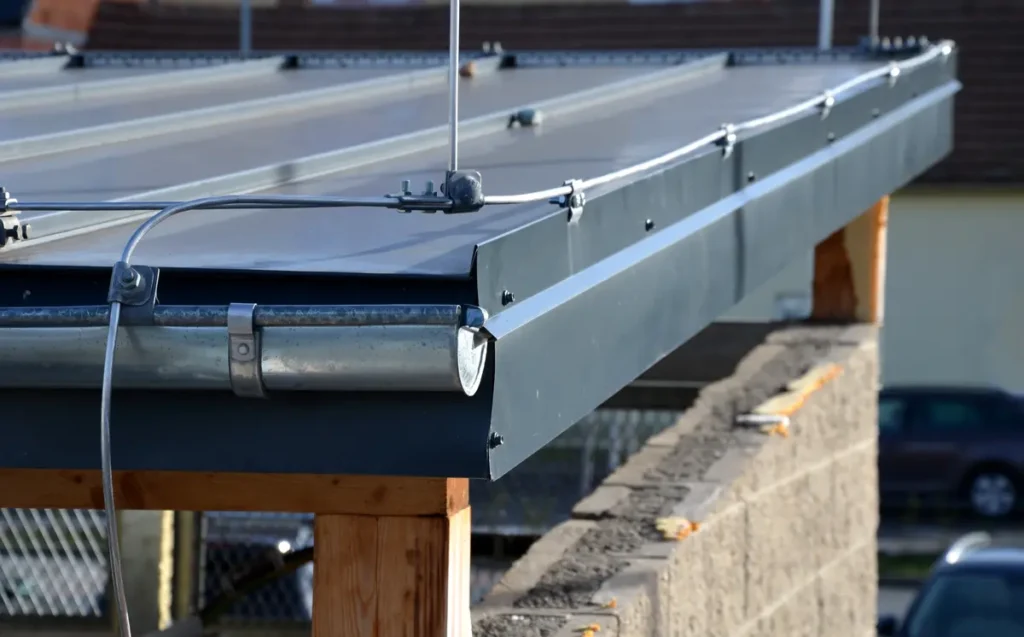
Not all gutters are created equal. Choosing the right system for your flat roof depends on the structure of your building, your climate, and your specific drainage requirements. Here are the main types of gutters you’ll encounter for flat roofs:
In addition to the common types, you might also consider half-round gutters and seamless gutters. Half-round gutters feature a rounded half-circle shape that allows for efficient water redirecting away from homes. They have a larger water capacity compared to K-style gutters but may require additional hangers or brackets for proper support due to their curved shape.
Seamless gutters are another excellent option, especially for flat roof guttering systems. Their design prevents water pooling and blockages caused by joints, offering a continuous flow of water that enhances drainage efficiency and minimizes debris accumulation.
1. Box Gutters
Box gutters are a popular choice for flat roofs, particularly on commercial buildings. They’re installed within the edge of the roof or tucked inside the building’s facade, making them less noticeable.
✅ Advantages
- Large capacity for heavy rainfall
- Blends seamlessly with the building’s design
- Ideal for large commercial properties
❌ Disadvantages
- Maintenance can be challenging due to their concealed location
- More expensive to install compared to other types
2. K-Style Gutters
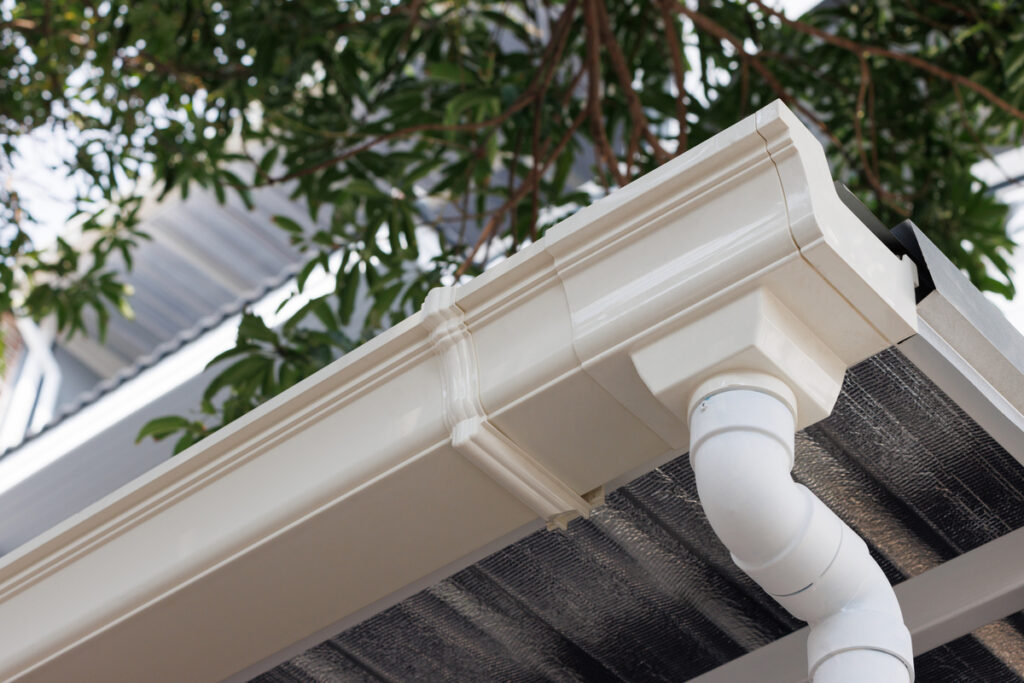
K-style gutters are commonly used and have a decorative appearance resembling crown molding. Although they’re more common for sloped roofs, they can work for flat roofs depending on the setup.
✅ Advantages
- Holds more water compared to traditional round gutters
- Aesthetic appeal
- Wide availability and cost-effective
❌ Disadvantages
- May not be ideal for roofs with extremely heavy water flow
- Can be harder to clean because of the angled design
3. Fascia Gutters
Fascia gutters are installed directly onto the fascia board of the roof. They are custom-made to fit the exact dimensions of the roof, offering a sleek and tailored appearance.
✅ Advantages
- Customizable to your property’s dimensions
- Minimal risk of leaks due to fewer joints
- Durable and long-lasting
❌ Disadvantages
- More expensive than sectional systems
- Requires professional installation
4. Gutterless Roof Drainage (Scuppers)
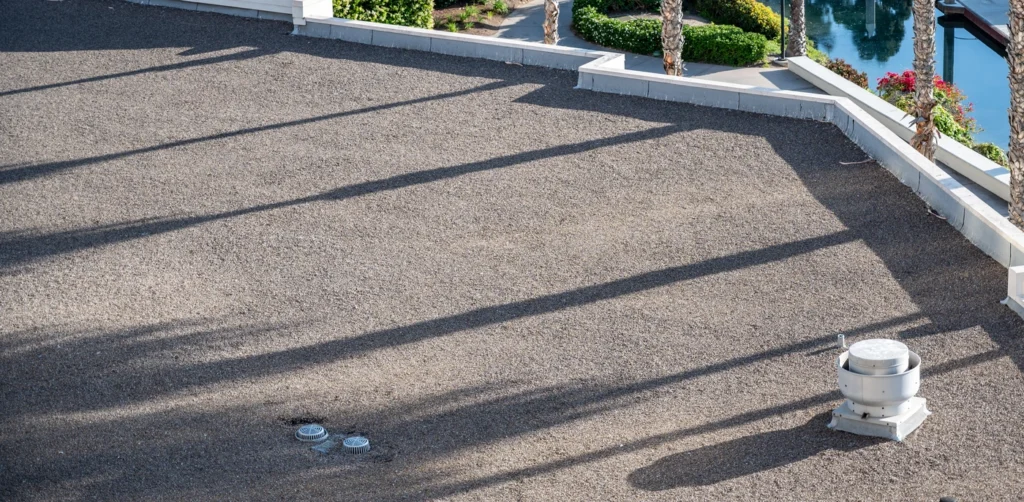
Some flat roofs use scuppers or a roof drain instead of traditional gutters, where water flows out through openings in the walls or parapets.
✅ Advantages
- Simple and cost-effective
- Requires minimal maintenance
- A good solution for certain architectural styles
❌ Disadvantages
- Less effective for heavy rainfall
- May require additional drainage systems to manage water flow
Flat Roof Guttering Materials and Colors
Flat roof guttering systems come in a variety of materials and colors to suit different architectural styles and preferences. Choosing the right material and color for your flat roof guttering system is crucial to ensure durability, functionality, and aesthetic appeal.
Materials
- Aluminum: A popular choice for flat roof guttering systems, aluminum is lightweight, corrosion-resistant, and can be easily formed into various shapes and sizes. Its versatility makes it suitable for both residential and commercial buildings.
- Vinyl: Vinyl gutters are another popular option, known for their durability, low maintenance, and resistance to rust and corrosion. They are an economical choice and are easy to install, making them ideal for DIY projects.
- Steel: Steel gutters are strong and durable, making them ideal for commercial buildings and large residential properties. They can handle heavy rainfall and are less likely to warp or crack compared to other materials.
- Copper: Copper gutters are a premium option, offering a unique aesthetic appeal and excellent durability. Over time, copper develops a patina that adds character to the building. While more expensive, they are a long-term investment due to their longevity.
- Zinc: Zinc gutters are a sustainable option, known for their durability, corrosion resistance, and eco-friendly properties. They require minimal maintenance and can last for decades, making them a cost-effective choice in the long run.
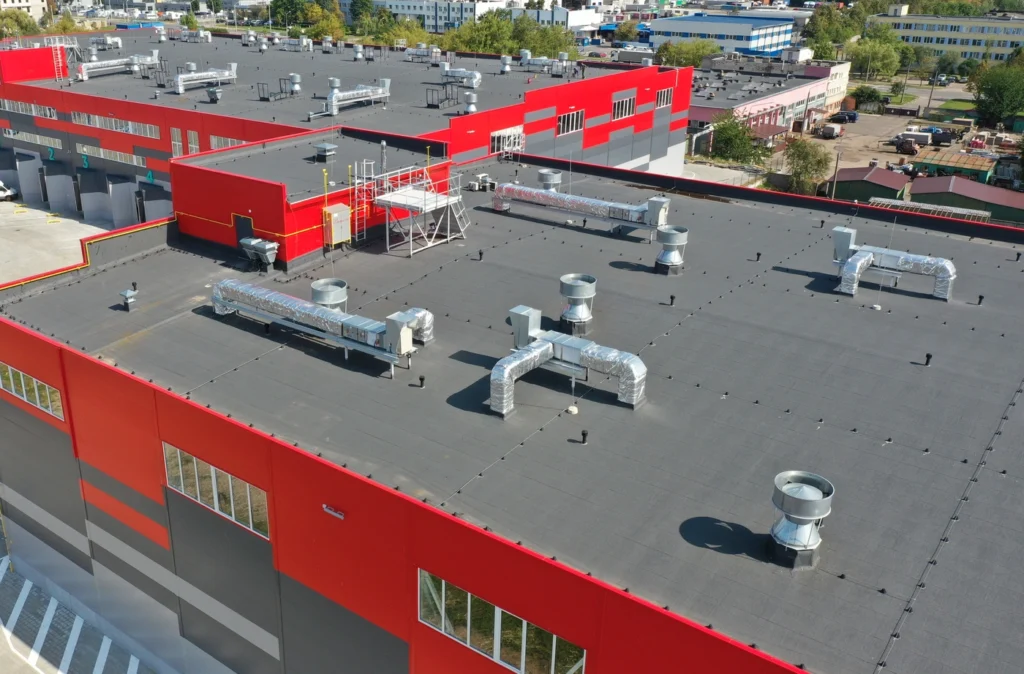
Colors
- White: A classic choice, white gutters blend seamlessly with most architectural styles and are easy to maintain. They reflect sunlight, which can help keep the gutters cooler and reduce the risk of warping.
- Brown: Brown gutters are a popular choice for homes with earthy tones, blending in with the natural surroundings. They can complement brick, stone, and wood exteriors, adding a cohesive look to the property.
- Gray: Gray gutters are a versatile option, suitable for modern and traditional architectural styles. They can match various roof colors and provide a neutral, understated look.
- Black: Black gutters are a sleek and modern option, ideal for contemporary homes and commercial buildings. They can create a striking contrast with lighter-colored exteriors and add a touch of sophistication.
- Custom Colors: Many manufacturers offer custom color options to match your home’s exterior color scheme. This allows for a personalized touch, ensuring that the gutter system enhances the overall aesthetic of the property.
Flat Roof Gutter System Installation
Proper installation of a flat roof gutter system is crucial to ensure effective water drainage and prevent water damage. A well-installed gutter system can last for decades, while a poorly installed system can lead to costly repairs and maintenance.
Drip Edge and Flashing
- Drip Edge: A metal drip edge is installed along the edge of the roof to direct water into the gutter system. This helps prevent water from seeping under the roofing material and causing damage to the roof deck and fascia.
- Flashing: Flashing is installed around chimneys, vents, and skylights to prevent water from seeping into the roof. Proper flashing ensures that water is directed away from these vulnerable areas, reducing the risk of leaks and water damage.
- Gutter Installation: Gutters are installed along the edge of the roof, ensuring a secure and watertight connection to the drip edge and flashing. The gutters should be sloped slightly to ensure water flows towards the downspouts.
- Downspout Installation: Downspouts are installed to direct water from the gutters to the ground, ensuring proper drainage and preventing water accumulation. Downspouts should be positioned to direct water away from the building’s foundation, reducing the risk of erosion and water damage.
By choosing the right materials and colors for your flat roof guttering system and ensuring proper installation, you can enjoy a durable, functional, and aesthetically pleasing gutter system that protects your property from water damage.
How to Maintain Gutters for Flat Roofs
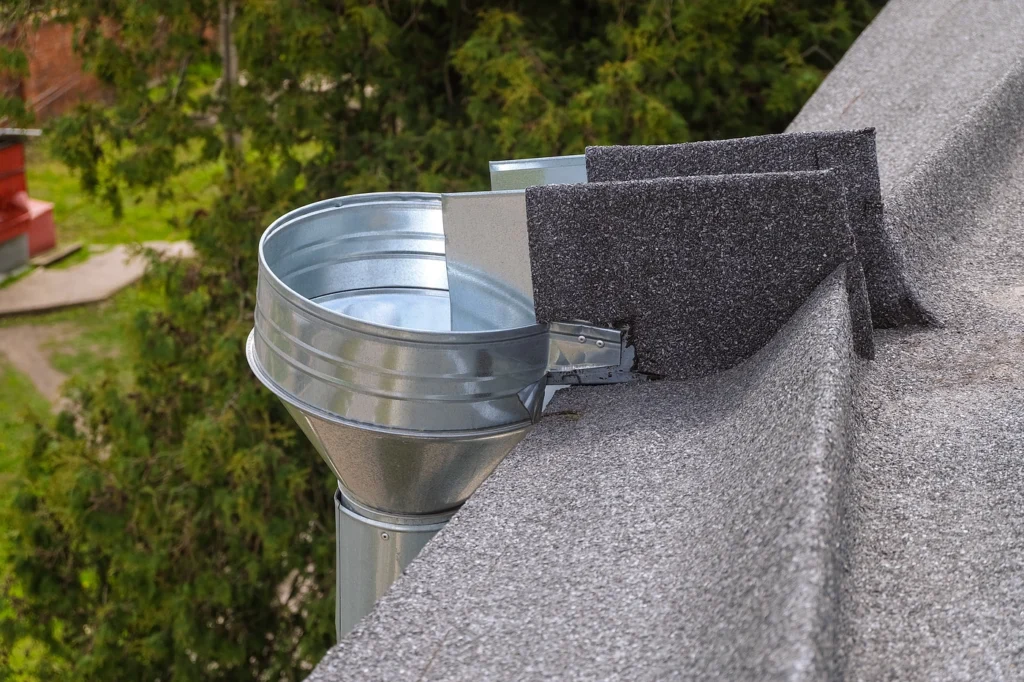
Gutter cleaning is essential for ensuring that gutters are effective and in good condition. Clogged or damaged gutters can lead to the very problems they’re meant to prevent. Here are some tips for keeping your gutters in top shape:
Regular Cleaning
Clear debris, such as leaves and dirt, from your gutters at least twice a year. For properties surrounded by trees, more frequent cleaning may be required.
Inspect for Damage
Look for cracks, rust, or sagging sections in your gutter system. Address any wear and tear promptly to avoid larger issues down the line.
Install Gutter Guards
Gutter guards can help keep debris out and reduce the frequency of cleaning. Options include mesh screens, foam inserts, and surface-tension guards.
Check Downspouts
Ensure downspouts are clear and directing water away from the foundation. Extend downspouts, if necessary, to prevent pooling near the building.
Professional Inspections
Consider scheduling annual inspections with a professional to check for issues you might miss, such as poor drainage or hidden blockages.
Choosing the Best Gutter System for Your Flat Roof
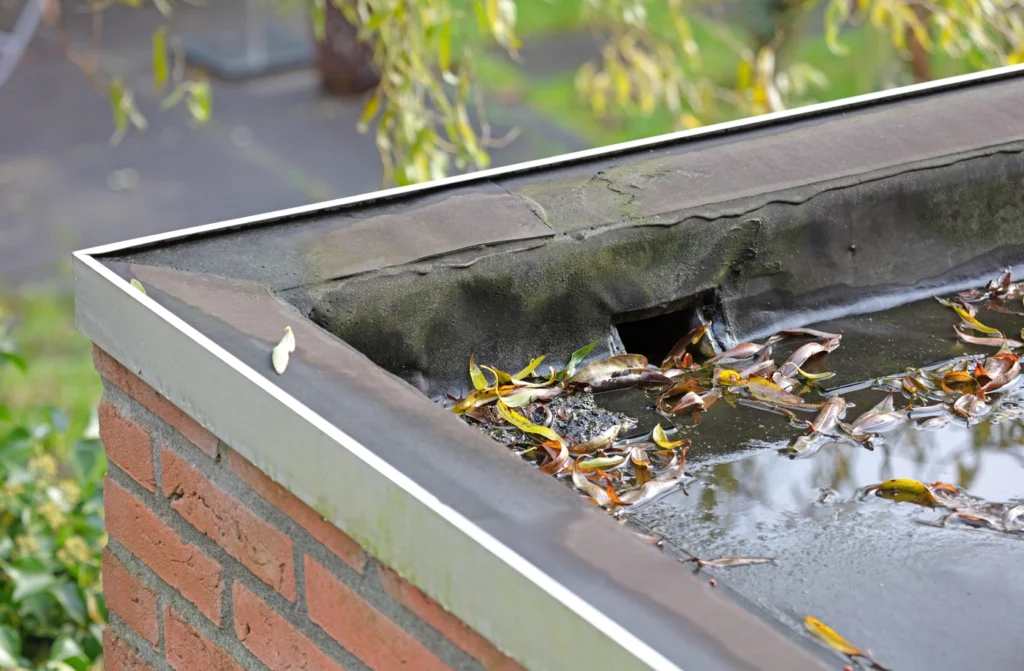
The best gutter system for your flat roof depends on several factors, including the size of your building, the amount of rainfall in your area, and your budget. Here’s what to consider:
Capacity Needs
If your property is in a region with heavy rainfall, choose a system with a larger capacity, such as box gutters or K-style gutters.
Aesthetics
For commercial properties with a sleek design, consider box or fascia gutters to maintain the aesthetic appeal.
Durability
Select materials that can withstand your climate. For example:
- Aluminum is lightweight and resistant to rust, making it ideal for wet climates.
- Steel is more durable but prone to rust without proper coating.
- Copper offers a premium look and long lifespan, though it’s more expensive.
Budget
While gutters might feel like a large upfront investment, they save you from costly roof repairs in the long run. Choose a system that balances quality and affordability.
Ease of Maintenance
If your property requires frequent cleaning, opt for gutters compatible with gutter guards or systems that are easy to access.
Why Work with G. Cannon for Your Flat Roof Gutter Needs?
At G. Cannon Roofing and Siding, we understand the unique challenges of flat roof maintenance for commercial properties. With decades of experience, we offer tailored solutions to ensure your building’s roof and drainage systems meet the highest standards of efficiency and durability.
Here’s why property managers and commercial property owners trust G. Cannon:
- Expertise You Can Rely On: Our team specializes in flat roofs and their drainage systems, offering customized recommendations to suit your needs.
- High-Quality Materials: We use only the best materials to ensure your gutters stand the test of time.
- Exceptional Customer Service: From installation to maintenance, we’re here to support you every step of the way.
- Competitive Pricing: We offer cost-effective solutions without compromising on quality.
Get A Flat Roof Gutter System For Your Property Today!
Effective drainage is the backbone of a well-maintained flat roof, and gutters play an integral role in this process. By choosing the right gutter system and keeping it in top condition, you’ll not only protect your building from water damage but also extend the lifespan of your flat roof.
Need expert advice? The team at G. Cannon Roofing and Siding is here to help.
Contact us today to discuss your flat roof gutter options—we’ll help you find the perfect solution for your property’s needs. Protect your investment and ensure peace of mind with G. Cannon!
